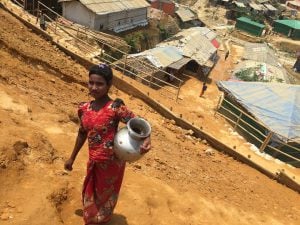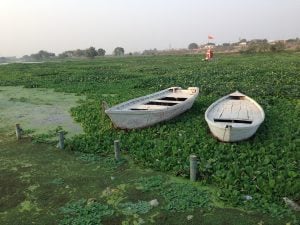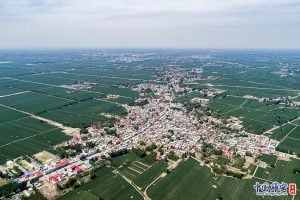In late May, the urban centre of Zaduo, Qinghai province, was deserted. The town’s main street, usually crammed with pedestrians and vehicles, was a ghost town except for a couple of patrolling policemen and a few white-capped businessmen.
“All the people here, mostly local Tibetans, have gone to the alpine mountains to dig yarsagumba,” a middle-aged man in a white hat called Zhao said with a grimace.
Yarsagumba, or caterpillar fungus, is a unique fusion of a parasitic fungus and its caterpillar host. It is a prized ingredient in Chinese medicine and worth its weight in gold.
“We are here every day waiting for them to come back, ready to buy their stuff,” Zhao said, before explaining that anyone wearing a white hat like his was a trader or middleman looking to buy the precious ingredient.
Herders drive cars bringing tents, food, equipment and queue to enter areas of caterpillar production. All those entering the area must pay a fee at the check point before going in for a month and a half of caterpillar harvesting from the 15 May.
Amid all this, urban life on the plateau had been completely suspended. Stores and restaurants were shuttered, schools were closed and even some government offices had shut down.
It’s hard to believe that this empty town is home to more than 40,000 residents. Each year, at the beginning of summer, when the snow melts and the grass sprouts on the Qinghai-Tibet plateau, ethnic Tibetans from all walks of life begin their seasonal journey in search of the valuable fungus in high-altitude pastures.
They set up their camps and scour the alpine ranges inch-by-inch during the day, returning to their camps in the evening. This cycle runs for almost two months.
Tibetan ‘Gold Rush’
On May 22, around lunchtime on a remote mountain slope 50 kilometres south in Sulu, workers carrying iron hoes crawl slowly on their hands and knees and meticulously scan the ground.
Tsering Tsomo, 24, said that she and her husband Tashi Doldin had already collected around 30 yarsagumba that day, which would fetch roughly 1,200 yuan (USD 188) on the market.
“Every morning, we set off at around 7am and return to our tent at the foot of the mountain at around 7pm to 8pm,” said Tsering. “The work is tedious, even hazardous, and unpredictable since the quantity and quality of the harvest depends on the weather.”
On a nearby mountain slope, Awa, a young Tibetan man in his twenties, said that over the past few days he had found roughly 50 or 60 yarsagumba each day, totalling some 2,000 yuan (USD 310) in income per day. Considering the per capita annual income in Qinghai province in 2017 was 19,001 yuan (USD 2,970), harvesting yarsagumba is too lucrative an opportunity to miss.
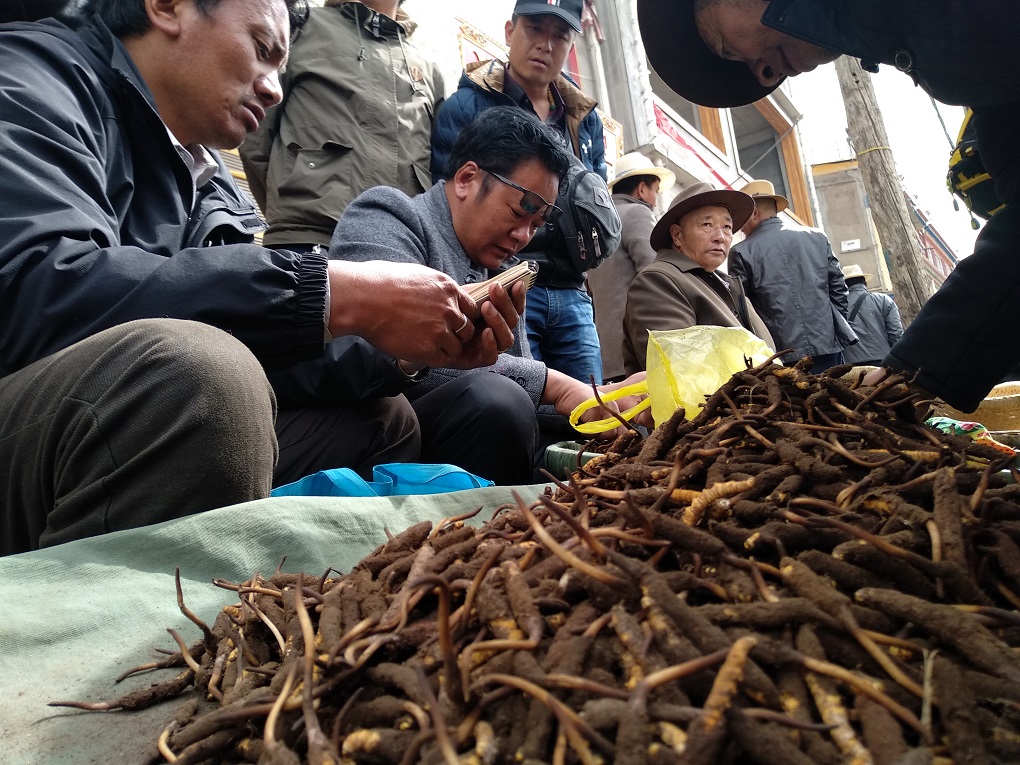
Yarsagumba has been prescribed in both traditional Chinese medicine and Tibetan medicine for centuries for various conditions, including strengthening lung and kidney function, reviving energy, stopping haemorrhages and decreasing phlegm.
Caterpillar fungus has become one of the most expensive medicines in the world with a current local market price of up to 300,000 yuan (USD 46,900) per kilogramme for the highest quality. When sold to Chinese consumers, the price is higher than gold.
“In the late 1990s and early 2000s, the price for one fungus was four to five yuan (USD 0.62-0.78). Within two decades the price increased more than ten times,” said He Yunfeng, a fungus collector from another part of Qinghai.
Caterpillar fungus is changing livelihoods
Inside China, Qinghai and the Tibet Autonomous Region are the two major regions where yarsagumba can be found. Zaduo county in Yushu prefecture – the source region of the Lancang-Mekong and Yangtze rivers – is famous for the quality and quantity of its yarsagumba.
In recent years, Zaduo has been at the centre of a fungus “Gold Rush,” making it one of the fastest growing economies in Qinghai. In 2017 alone, 10 tonnes of yarsagumba were produced, almost 10% of total national production. This brought a per capita annual income of 20,000 yuan (USD 3,120) to the local population.
“Since I was nine, I followed my parents on this pastureland to dig for yarsagumba, when huge numbers of people from other places were allowed to come,” said Tsering Tsomo. “Now I’m married, and yarsagumba is the only source of income for me and my husband because we have settled in the town. We no longer have yaks on the grassland.”
Today, most young and middle-aged Tibetans here are like Tsering, and rely almost exclusively on income generated by yarsagumba.
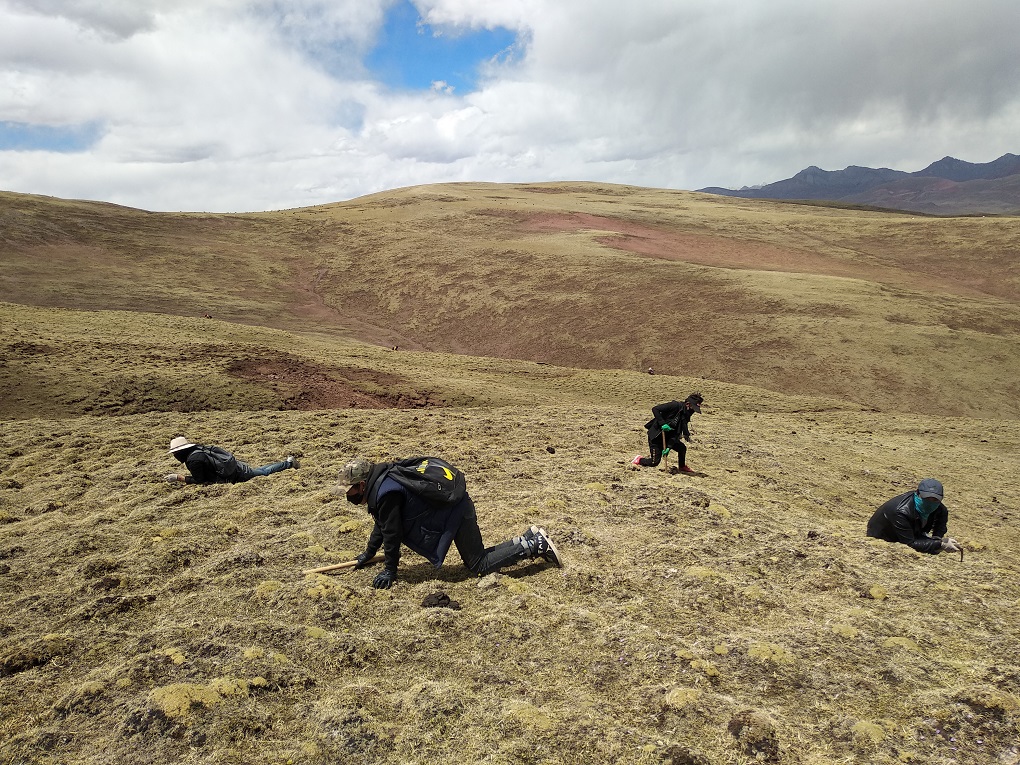
Pang Jimin, a local culture expert in Zaduo, said that yarsagumba harvesting was once a supplementary income for locals, with livestock husbandry the main source of livelihood.
“Collecting these organisms accounted for about 20% to 30% of household income for rural Tibetans in the 1990s,” Pang said. “Due to the booming market and high prices, since the early 2000s it has become the dominant, or even only, income source for people in Zaduo and elsewhere on the grassland.”
Li Shuangye from the Zaduo Animal Husbandry Bureau said that total livestock numbers in Zaduo have steadily decreased since the yarsagumba boom.
Statistics provided by Li indicate that by the end of 2017, the total number of livestock in the county, including yaks, sheep and goats, was less than 410,000, down from more than one million in the late 1990s.
“We don’t face an overgrazing problem, on the contrary, to reinforce livestock as our county’s major industry we have tried to encourage our people to maintain their tradition of herding,” Li said.
Effective fungus management
The fungus has brought profit to Tibetans but a growing dependence on it has sparked violent confrontations between rival collectors. The influx of outsiders during the harvest period has provoked deadly conflicts.
“There were fights every year in the early 2000s and occasionally people were wounded or even killed,” a local collector in Sulu said.
Sulu boasts more than half of the total yarsagumba resource in Zaduo, and historically it has become a hotspot for collectors. Local sources suggest conflicts escalated in 2005 when people from the neighbouring county of Nangchen pushed through barricades set up by herders in Sulu. The conflict involved thousands of people and resulted in one death.
Following this, stronger regulations were enforced and the military was even deployed.
“Without regulation and systematic management, local herders charge permit fees to allow outsiders to enter, which poses security risks,” Tsedan Druk, party secretary of Zaduo, said.
“So we started to prohibit people from outside Zaduo from coming in and digging yarsagumba during the harvest season. But we allow Zaduo locals who live in areas without yarsagumba to move freely to areas that have it.”
To prevent overharvesting, the Zaduo government has established strict official seasons for yarsagumba harvesting from May 15 until the end of June.
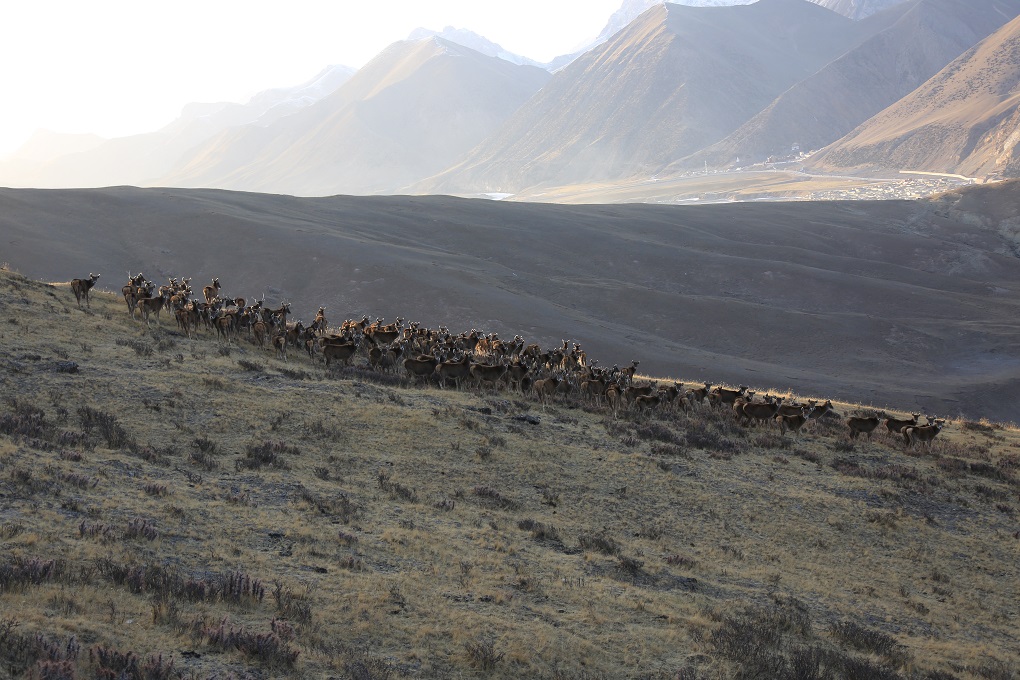
In Sulu, collectors from other parts of Zaduo county are allowed in from May 15 onward, and must leave on June 30 without delay. This year, according to Sulu township head Ga Song, more than 6,000 people from outside Sulu arrived for the harvest season – more than twice the local population of 2,753. To compensate local people for lost resources, all collectors from outside Sulu must pay for a collection permit. Zaduo county fixes the fee for each collection permit at 1,200 yuan (USD 187), while children and the elderly are exempt.
“The total revenue of over seven million yuan (USD 1.1 million) generated from the entry permits will eventually be distributed among the villagers,” Tashi Ningma, party secretary of Sulu said.
“Typically, one can easily recoup the fee with a single day’s digging. It is clear that for the sake of maintaining internal stability and improving the lives of people in Zaduo, Sulu locals are making huge sacrifices.”
Inside Sulu, four major roadblocks and ten checkpoints on roads and mountain passes control the movement of people from Nangchen county and Tibet, manned by officials from the county government.
“Local officials are required to man the checkpoints 24 hours a day, seven days a week, and we are on high alert during the harvest season to stop people illegally entering,” said Lobsong Sangding, chief of Sulu police station.
“No major conflicts have occurred in recent years despite a number of illegal entries through mountain passes from neighbouring Nangchen county.”
Lobsong added that with effective control of outside collectors, and self-policing by local people, outsiders without entry permits can be quickly identified and persuaded to leave.
For the sustainable management of resources, the local government has stopped locals from digging yarsagumgba on the 10th, 15th and 30th day of each Tibetan month. Instead they are advised to collect garbage, do household chores, go to the county centre to restock supplies, or just rest.
“Traditionally, these dates are sacred according to Tibetan Buddhist doctrines. Working on them is considered unlucky. All people obey this rule strictly,” Ge Jia, 22, said at his home in Sulu on a rest day in late May.
Declining caterpillar fungus harvest
As local Tibetans have become increasingly dependent on collecting yarsagumba, the quantity of the harvest on the Qinghai-Tibet Plateau has decreased significantly, locals said.
The careful, difficult work of finding caterpillar fungus from The Third Pole on Vimeo.
Awa is on the grassland slopes looking for caterpillar fungus from 6 o’clock in the morning to two in the afternoon and only finds 30 odd caterpillar fungi, his best count yet.
Heating up
Scientific studies have found the Qinghai-Tibet Plateau is extremely sensitive to global warming, and this warming trend is expected to intensify in the future.
Chinese scientists have found that the major distribution area of yarsagumba has moved up to 4,400 to 4,700 metres in elevation, an increase of 200 to 500 metres in the past 30 years. Given current trends, this could see the viable range of the fungus reduced by 18.5% by the 2050.
Climate change effects, including less snow in winter, an earlier snowmelt in spring and overall warming, are perceived to be major causes of the decline in abundance by most Tibetan caterpillar fungus collectors. In addition, destruction of grassland by pikas (small furry mammals) has resulted in severe desertification, further devastating the crop.
According to Ni Ga, a senior official in Zaduo, the yarsagumba is both a blessing and a curse for Tibetans.
“Generally speaking, I think it has brought more negative impacts than benefits. Depending solely on yarsagumba has made people lazy. With money earned easily, people have squandered their wealth and even gambled it away; it has provoked fights and conflicts among Tibetans. If someday this resource dries up, I fear the people of Zaduo might starve to death, now that so many have completely abandoned their traditional nomadic life,” cautioned Ni.
“The impact on local culture is profound, since people have given up herding, and unfortunately this one-way change cannot be reversed,” said Xu Ming, a researcher with the Chinese Academy of Sciences.
An expert on yarsagumba and climate change, Xu Ming nonetheless added that the resource has contributed to stability in the plateau’s ecological system.
“Due to yarsagumba, local nomads have mostly settled in urban areas, resulting in a reduction of livestock on the grassland, which happened to solve the overgrazing problem that haunted the plateau in the 1980s,” Xu said.
“Considering the species itself is an important biodiversity resource, I strongly advocate securing the quantity and market price of yarsagumba for the sake of the ecosystem.”
Through his team’s research Xu aims to help protect the caterpillar fungus industry for the future.
“Existing research is not yet sufficient to prove whether yarsagumba has a high medicinal value, but I think we still need to defend this fairy tale,” Xu added. Indeed debate on whether yarsagumba is a medicine at all heated up online recently.
For the moment, life on the plateau will continue in the same way so long as there is a market and a crop.
By late afternoon on May 26, a night and a whole morning of snow had fallen. But that didn’t stop Dingbu Jiangcai and his family from gearing up again and heading toward the grassland to continue their harvest.
Originally published on NewsChina, and edited version is republished here with permission.
